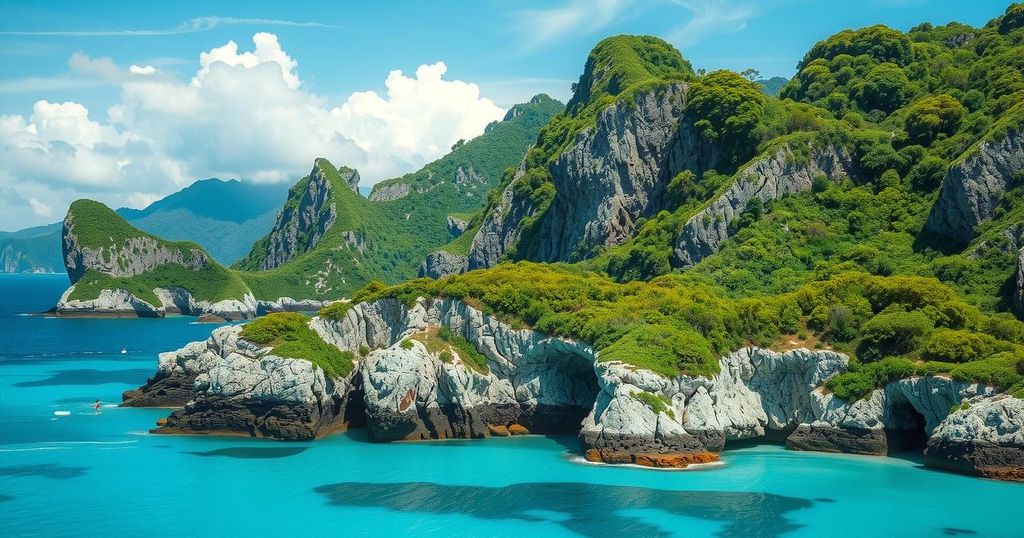Serua Island Faces Climate Change Threats: A Community’s Struggle to Survive

Serua Island in Fiji grapples with the severe impacts of climate change, facing rising sea levels and increased flooding due to extreme weather. Community elder Waisale Natuna highlights the importance of preserving the island’s cultural heritage while emphasizing the urgent need for effective climate resilience measures, despite government shortcomings in addressing the issue.
Climate change remains a pressing global issue, yet much has transformed since the landmark Paris Agreement was enacted in 2015. Back then, the United States stood at the forefront, advocating for sustainable practices. However, current geopolitical tensions and isolationist policies under the Trump administration have shifted the focus elsewhere, notably toward tariffs and conflicts overseas, such as the ongoing war in Gaza and the situation in Ukraine.
Extreme weather occurrences appear to be escalating beyond control, with unprecedented melting of polar ice and rising oceanic levels that are silently impacting coastal communities. Serua Island, situated near Fiji’s Viti Levu, illustrates this alarming reality as it faces relentless encroachment of seawater, threatening to disrupt the local populace’s traditional way of life.
The island, historically a paramount chief’s domain, holds deep cultural significance for the Indigenous Fijians of Serua Province. A recent visit by The Sunday Times highlighted the plight of residents due to climate-related disasters. Local elder Waisale Natuna, a former village headman, provided the tour, noting that a stroll along the once-accessible shoreline now reveals the severity of the erosion.
According to Natuna, approximately 100 households remain on Serua today, with many families relocating to the mainland village of Talenaua for safety. This trend has seen only one child from each family left to manage their homes on the island. The impact of cyclones was felt acutely in the 1980s when flooding from extreme weather obliterated their coastal landscape, prompting an early realization of the urgent need for climate resilience.
The most prominent attempt to combat climate change on Serua has been the construction of a seawall on the western side of the village, funded during the 1980s. “This wall does not suffice anymore; it only makes flooding worse during high tide,” Natuna pointed out. Indeed, there is little drainage to mitigate water accumulation, resulting in the gradual sinking of the soil.
The island features two main hills, Navua and Dakuiserua, which have also suffered from increased landslides due to heavy rainfall and rising tides. As Natuna explained, efforts to reinforce these areas include planting vetiver grass to stabilize the soil. However, the eastern section of Serua has received little attention from past governments, leaving the region vulnerable, and the solution of merely placing rocks along the shoreline appears to serve as a temporary fix.
Village elders are advocating for improvements not just to the seawall but also for a systematic drainage solution to effectively counteract rising seas. Under prior administrations, an Integrated Village Development Plan (IVDP) was initiated, wherein islanders proposed critical infrastructure enhancements, including elevating land and building a structurally sound seawall. Additionally, improved access through a walkway connecting the mainland to Serua was discussed.
Relocation is not on the table, according to Natuna and other elders. They emphasize the deep-seated connection to this land, rooted in identity and history. “This island embodies who we are, our lineage and ties to the sea. It is irreplaceable,” he declared passionately. Without waiting for governmental intervention, the people of Serua are committed to taking matters into their own hands to preserve their homeland amidst these changing climatic conditions.
As climate change wreaks havoc globally, Serua Island’s residents face the pressing challenge of rising sea levels and extreme weather events. Despite government shortcomings, the community’s commitment to preserving their heritage remains unwavering. Historical and cultural ties to the land drive them to seek solutions to safeguard their island’s future, emphasizing the importance of continued advocacy and local action in the face of a rapidly changing environment.
Original Source: www.fijitimes.com.fj








